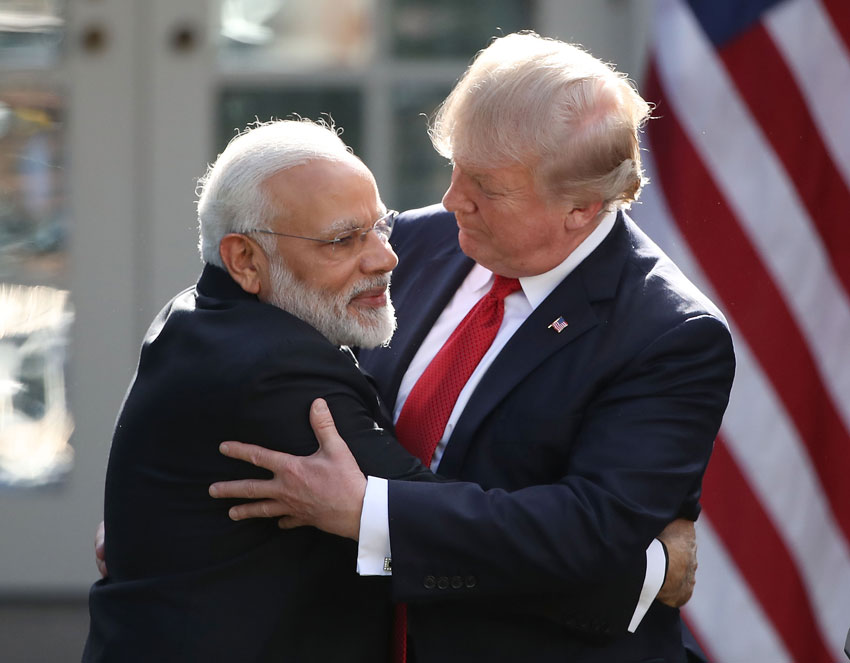First U.S. Crude Oil Arrives in India
A large oil tanker being guided.
A new beginning was made in the energy space last month. India received its first ever shipment of U.S. crude oil with state-owned refiner Indian Oil Corporation importing a 1.6 million barrels parcel at Paradip Port in Odisha, writes Siddharth Srivastava.
An abiding theme of successive U.S. Presidents, from Clinton to Trump, has been deepening business and strategic equations with India. This has taken the form of Washington siding with India to isolate Pakistan over terrorism. Indo-U.S. defense ties have grown over the years with America now a major supplier of armaments to India. A new beginning was made in the energy space last month. India received its first ever shipment of U.S. crude oil with state-owned refiner Indian Oil Corporation (IOC) importing a 1.6 million barrels parcel at Paradip Port in Odisha.
India, the world’s third-biggest oil importer, has now joined Asian countries such as South Korea, Japan and China, which have also been purchasing U.S. crude. It has been some years now that India has been unhappy about it’s overwhelming dependence on West Asian crude oil and gas imports. New Delhi has complained without success about the “Asian premium” that is unfairly charged by West Asian exporters keen to exploit the absence of choice and competitors.

Indian refiners have thus been closely looking at the import options after the ban on U.S. oil exports imposed in 1975 was lifted by former President Barack Obama in 2015 due to excess shale oil and gas production.
U.S. domestic production grew from a low of 5 million barrels per day (mbd) in 2008 to 7.7 mbd in 2013, and further scaled to 9.4 mbd in 2015. The occasion to import U.S. crude arose this year for India, after the discount for West Texas Intermediate (WTI), the benchmark for U.S. crude, to global benchmark Brent, that serves as a reference price for buyers in the West, stretched to its widest since 2015.
The U.S. crude was delivered by MT New Prosperity, a very large crude carrier (VLCC), with a capacity to haul two million barrels of crude, that left the U.S. Gulf Coast, Aug. 19. “IOC will process the crude at its refineries located at Paradip, Haldia (in West Bengal), Barauni (in Bihar) and Bongaigaon (in Assam). IOC, which became the first Indian public sector refiner to source U.S. crude, has placed a cumulative order 3.9 million barrel (of U.S. crude),” the company said.
State-owned Bharat Petroleum Corp Ltd (BPCL) and Hindustan Petroleum Corp Ltd (HPCL) have also placed orders for about 2.95 million barrels and 1 million barrels of U.S. crude respectively for their Kochi and Vizag refineries.
Thus, the total volume of the crude presently contracted by Indian State refineries is 7.85 million barrels. “Including the U.S. as a source for crude imports for refiners will mitigate the risk arising from geo-political disruptions,” said Sanjay Sudhir, the joint secretary for international cooperation at the federal ministry of oil and natural gas.
New Chapter in U.S.-India Relations
India’s foreign ministry termed the arrival of U.S. crude as “a new chapter in the history of Indo-U.S. trade” emerging from the “strategic partnership of global significance” that will promote “price stability” and contribute to “energy security.” The U.S. embassy in India said that crude oil shipments to India have the potential to boost bilateral trade by up to $2 billion.
Replicating the state companies, private players too are now looking to tap the U.S. hydrocarbon opportunity. Quoting unnamed sources, Reuters has reported that private sector major Reliance Industries, that operates the world’s biggest refining complex at Jamnagar in Gujarat, has purchased crude oil cargoes from the U.S. for the first time, drawn by the lower price for oil versus global benchmarks. Reliance has reportedly bought 1 million barrels of WTI Midland and a similar-sized cargo of Eagle Ford crude, both of which are expected to arrive in November.
U.S. producer Occidental Petroleum Corp sold the WTI Midland cargo. Meanwhile, the first shale gas from U.S. is scheduled to be delivered to India early next year. Indian entities, both state-owned and private that have invested about $5 billion in U.S. shale assets, are contracted to purchase 5.8 million tons per annum of liquefied natural gas (LNG) from the United States.
Analysts have linked the June meeting between President Donald Trump and Prime Minister Narendra Modi in Washington as a key driver in facilitating IOC’s U.S. crude contracts that were signed in July. However, regardless of the strategic importance of the talks that is being drummed up in the media by diplomats on both sides, the fact remains that Indian refiners have based their decision purely on commercial and transactional factors, which is the way it should be. And as long at oil hovers over $55 per barrel, U.S. producers will be able to compete against West Asian suppliers in the Asian market.
At the same time India cannot ignore countries such as Saudi Arabia, Iran, Iraq, Qatar, UAE, Kuwait, countries with which it has signed long-term contracts to buy oil and gas. While U.S. does provide a good negotiating peg, the importance of West Asia in India’s energy consumption basket will remain given the dominance of the region in overall global hydrocarbon supplies.
Moreover, most statistical projections, including official think tank Niti Aayog, predict that India’s dependence on imported oil will continue to be well over 80%, as it is currently, for many years.


